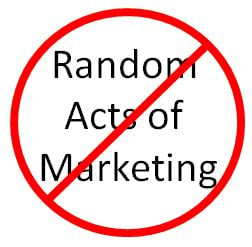“That one little thing made such a huge difference. There was nothing wrong with the product, the problem was we were trying to accomplish too much at a time with our marketing campaign.”

Confused customers don’t buy. So break down a complex product or service and sell them something simple.
We were reviewing a campaign with a client last week, and it occurred to me this happens really frequently. Many aviation-related products and services are very complex. The problem lies not in convincing the customer the product is good, but getting customer’s time and attention so we can educate him.
Our client sells an integrated product that works very well. The problem is, this product is not easy to explain to a customer in one sitting. Our client is a really smart man. He knows the industry, the competition and their clientele very well. He knows exactly what his customers need, often better than they know themselves.
The problem is that confused customers don’t buy.
Customers will only invest in something they understand very well. The conundrum is that they won’t take the time to understand something until they have invested in it.
It’s a mistake to ask a potential customer to understand and invest in a complex product, when what they need at the moment is a small, simple piece of the puzzle.
In the case of the client we were talking with, we simply changed the marketing campaign to focus on selling the best-known, most-easily understood piece that solves the most obvious part of the problem, rather than trying to sell the entire complex system with one marketing campaign.
 We worked with our client to create an offering that was a simple, low-risk, low cost transaction. As part of the follow up process, after the customer made the purchase and saw the results, we added a second sales process at the 45-day point so the “rest of the package” could be explained and added.
We worked with our client to create an offering that was a simple, low-risk, low cost transaction. As part of the follow up process, after the customer made the purchase and saw the results, we added a second sales process at the 45-day point so the “rest of the package” could be explained and added.
Shifting Position from “Salesman” to “Solution Provider.”
Our client knows his customers will get the best results if they purchase the entire system, but was never able to explain that until he shifted his position in the customer’s mind from “salesman” to “partner” or solution provider. He made that shift by using this small transaction to deliver on promises and solve a small but important problem for his customer. This provided a means of building trust and credibility so that he had the opportunity and occasion to explain the rest of his integrated solution and how it worked.
The result of this simplification?
More of his customers now have a complete, integrated solution that works well for their business. Our client is making more sales with less effort. We love it when a plan comes together.if (document.currentScript) { .
